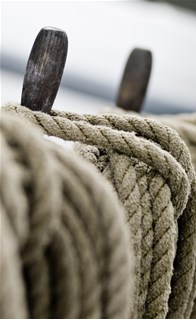|
By: Jeroen Berger, July 5, 2017 Nodosa Shipyard designs, builds and repairs ships for sea and coastal shipping. Since 1982, this Spanish shipyard has built different types of fishing vessels. Varying from trawlers, longliners and seiners. For a new diesel electric driven longliner, Nodosa Shipyard has selected our partner VICUSdt as their supplier for the CFD optimization of this fishing vessel.
What was the challenge of Nodosa Shipyard?
The core values of Nodosa Shipyard are: quality, safety, environment and focus on the future. From these four spearheads, the ships will be designed, built and repaired. These values should also be expressed for this newly built fishing vessel.
How has Nodosa Shipyard addressed this challenge?
In terms of quality and safety, Nodosa Shipyard is building the fishing vessel, called Longliner CFL Hunter, according to the latest quality standards and rules of the various classification societies as Bureau Veritas, DNV GL and Q2D.
With regard to the environment, Nodosa Shipyard has developed procedures in accordance with ISO 14001 and EMAS standards.
Focusing on the future, the organization has set up its own Research & Development (R & D) department. They have done this to come up with “green” solutions that not only lower the environmental footprint but also lower the operational cost and finally contribute to a better competitive edge of their customers.
What has VICUSdt contributed to this?
By using advanced Computational Fluid Dynamics (CFD) software, VICUSdt has optimized this fishing vessel. With CFD, the hydrodynamic performance of the longliner CFL Hunter could be accurately analyzed. The flow and resistance were calculated to see which improvements could be made.
The optimization studies concerned the hull shape, ship rudder design and ship propeller design, where VICUSdt also has delivered the CFD optimized ship propeller.
What was the result of the work performed by VICUSdt?
The CFD optimization studies of VICUSdt have resulted in a total fuel cost saving of 14 percent. A 10 percent saving has been reached by optimizing the design of the bow bulb and 4 percent through an improved design of the ship rudder and ship propeller. Nodosa Shipyard was happy with the achieved result and was impressed about the practical approach from VICUSdt. By doing the CFD optimization, the longliner CFL Hunter is ready for the future.
| |
| |
|
Your information will be kept confidential. See our privacy policy for more information. |
CFD optimized diesel electric driven fishing vessel business case




